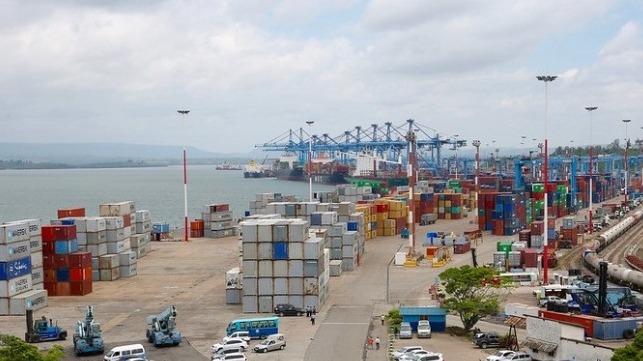Modernization Milestones at Mombasa Port, East Africa's Regional Hub

The African shipping and maritime sectors have largely remained undeveloped compared to the rest of the world, despite hosting mineral rich-countries that the industrialized world depends on to run its industries. The primary reason that Africa has been in the spotlight in matters of shipping is due to piracy historically reported on the Somalian and West African coastlines. But with a rapidly increasing population and a growing consumer class, the demand for imported goods will soar in African nations, requiring improvements in containerized cargo to allow efficiency in supply chains and reduction in import costs.
Africa has 16 landlocked countries, which are home to 30 percent of the continent’s 1.3 billion people. All of these landlocked nations are net importers and thus dependent on their neighbors’ access to the sea. This is the backdrop for Africa’s growing trade relationship with China, as well as China’s dominance in projects to enhance Africa’s port infrastructure.
Mombasa Port, which is Eastern and Central Africa’s regional hub, has registered significant progress in modernization and competitiveness. The $3 billion Kenya Ports Authority investment program envisages that Mombasa Port will have an annual capacity to handle 110 million tonnes of cargo by 2040.
In 2018, a Chinese contractor embarked on extending the new SGR (Standard Gauge Railway) railway to cover 10 berths at Mombasa Port, and a cargo train is already ferrying goods to an inland container depot in Nairobi.
Additionally, after completion of a second container terminal with a capacity of 550,000 TEU, construction of a new oil terminal is underway with an expected completion in August 2021. Currently, there are only two oil terminals which can only hold one tanker at a time. The new terminal will be in a position to handle four tankers of up to 100,000 tonnes. This project is also under a Chinese contractor, the China Communications Construction Company (CCCC).
In May, Maersk and Cosco (China Ocean Shipping Company) signed a new joint service deal dubbed “Mashariki” with an aim to introduce direct trips between Eastern Africa and Asia. The container ship Cosco Yinkou made the first voyage of this service to Mombasa in early June, and she sailed out again in less than 24 hours. One of the cranes recorded 362 moves per crane shift, significantly increasing the port’s efficiency. The Asian shipping lines ASEA and JEDDX have also introduced direct trips to Mombasa Port and have both made their maiden calls in recent months.
Kenya has also registered remarkable progress in the construction of Lamu Port, located 200 miles north of Mombasa. The 32-berth Lamu Port is a greenfield port, part of the Lamu Port - South Sudan - Ethiopia Transport (LAPSSET) corridor. This large-scale project is aimed at enhancing Kenya’s position as a gateway and transport hub in the East African region. It will also facilitate regional economic integration among Ethiopia, Rwanda, South Sudan and Democratic Republic of Congo.
The opinions expressed herein are the author's and not necessarily those of The Maritime Executive.
